UNBUILT 5 - An Exercise in how to use 'Style'



Requirements
The requirements provided by the Clients were a design to provide a minimal physical setting, that at the same time could be readily understood and built by local carpenters. Related to this they stressed the notion of its being a "country house".
Initial guidelines set out the general limits of the Design: a specific list of requirements included a slightly elevated ground floor, separation between adults and children was stressed, common activities had been specified to a second floor, and a third floor with sundeck was cited.
It was felt that the design should begin with a conventionally wood-framed "box", which would be cut out or articulated in response to program. Its interior would attempt to extend the modest common spaces through diagonal movement, as well as vertical spatial voids where possible. A vocabulary for room expression was simply that private rooms would have cross-ventilation, while public spaces would be expressed as corner conditions. Minor spaces would receive whatever seemed appropriate, but conventional sizes of aluminum windows would be used throughout.
Approach to the house was on a ranch road from the Southeast. Two sides of the house were to be related to the small clearing and the field bordering the road. Another side would face the thicket. Therefore, the design attempted to achieve a definite "front", "back", and "side" expression. The initial image from the approach is a simple gable form with a lean-to attached and windows centered on the apex of the gable. The "sides" are more fragmented picturesque massing expressing the major functions of the three floors. The "back" is expressive of residual elements.
Solution
Formal expression attempted to respond to the clients' desire for a "country house" and sought references to the vernacular of East Texas. In his book Changing Ideals in Modern Architecture, Peter Collins concludes his presentation with a proposition relative to stylistic expression and its seemingly endless variety in contemporary times. It was this that was taken as a point of departure:
". . . that among all the conflicting ideals of modern architecture, none has proved today of such importance that it can take precedence over the task of creating a humane environment . . . to discipline their architectural forms to harmonize with earlier forms without sacrificing any of the principles of the modern age . . . works deliberately intended to be banal, if one uses the word in its strict etymological sense as meaning 'common to all' the buildings around them . . . for as Perret once remarked, 'He who, without betraying the modern conditions of a programme, or the use of modern materials, produces a work which seems to have always existed, which, in a word, is banal, can rest satisfied'."
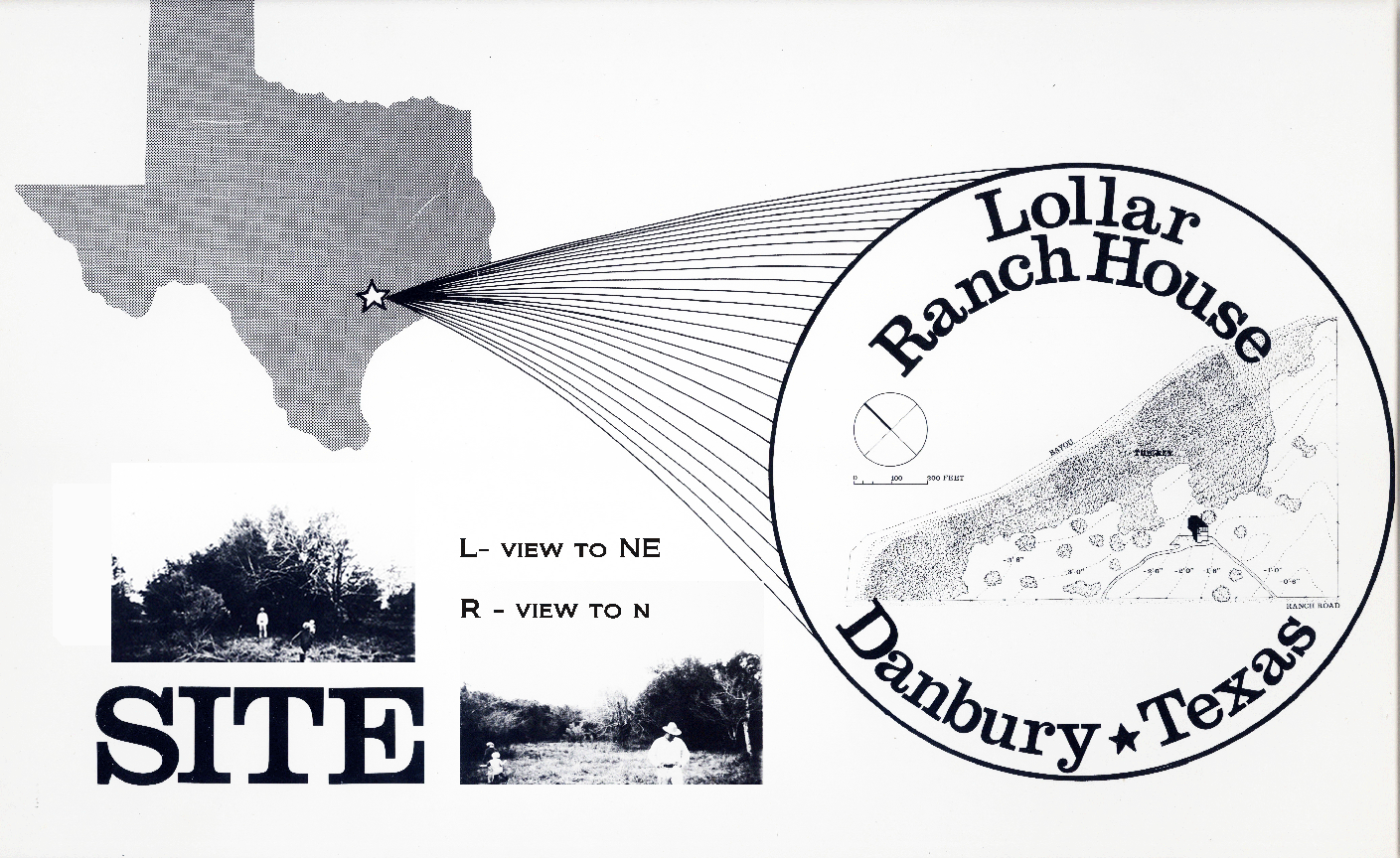
TEXAS!! A rural Down-Home site set near a wooded area.
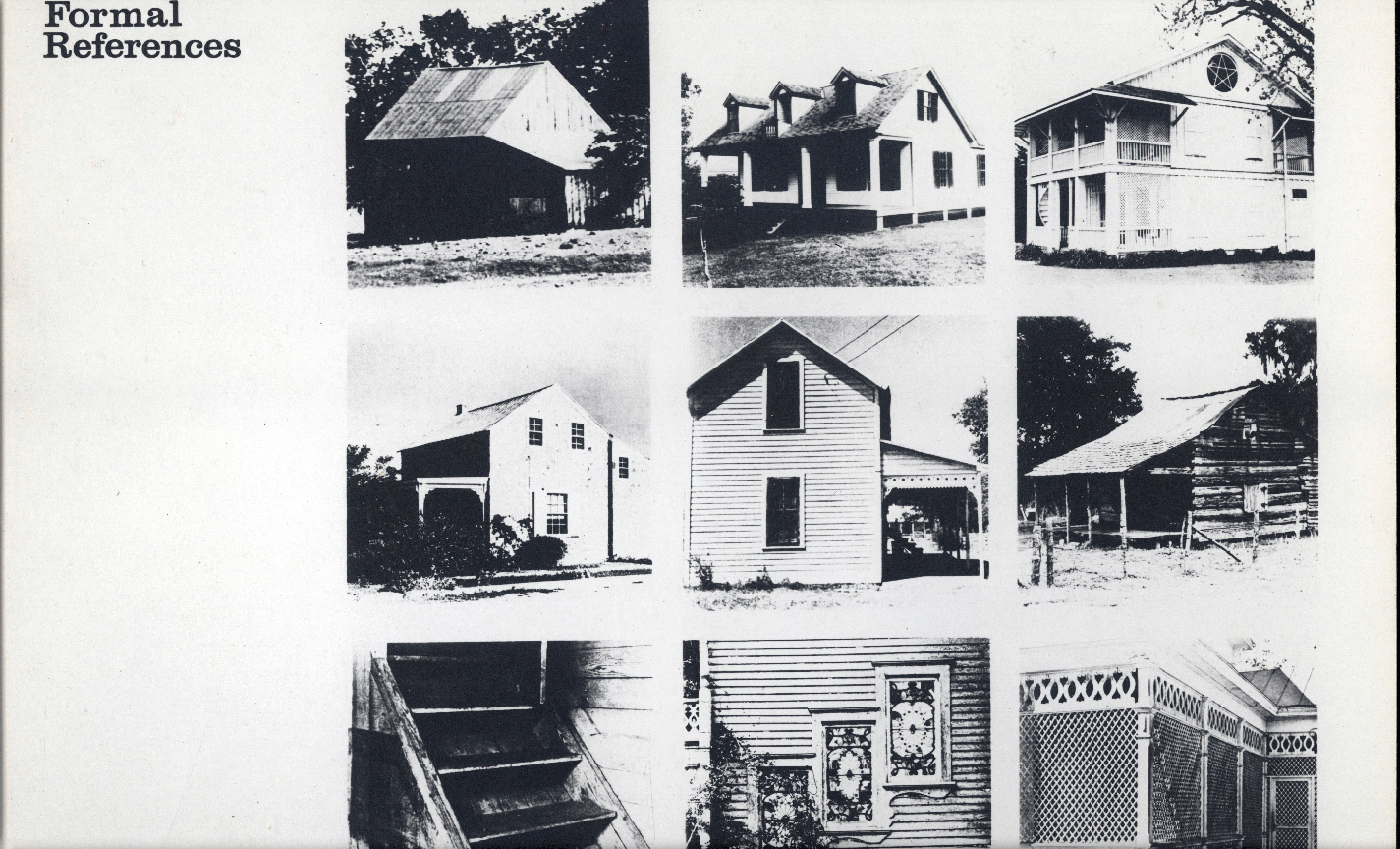
In response to the Clients expressed 'stylistic preference', Regionalism references were shown for a case of "it will look like these".
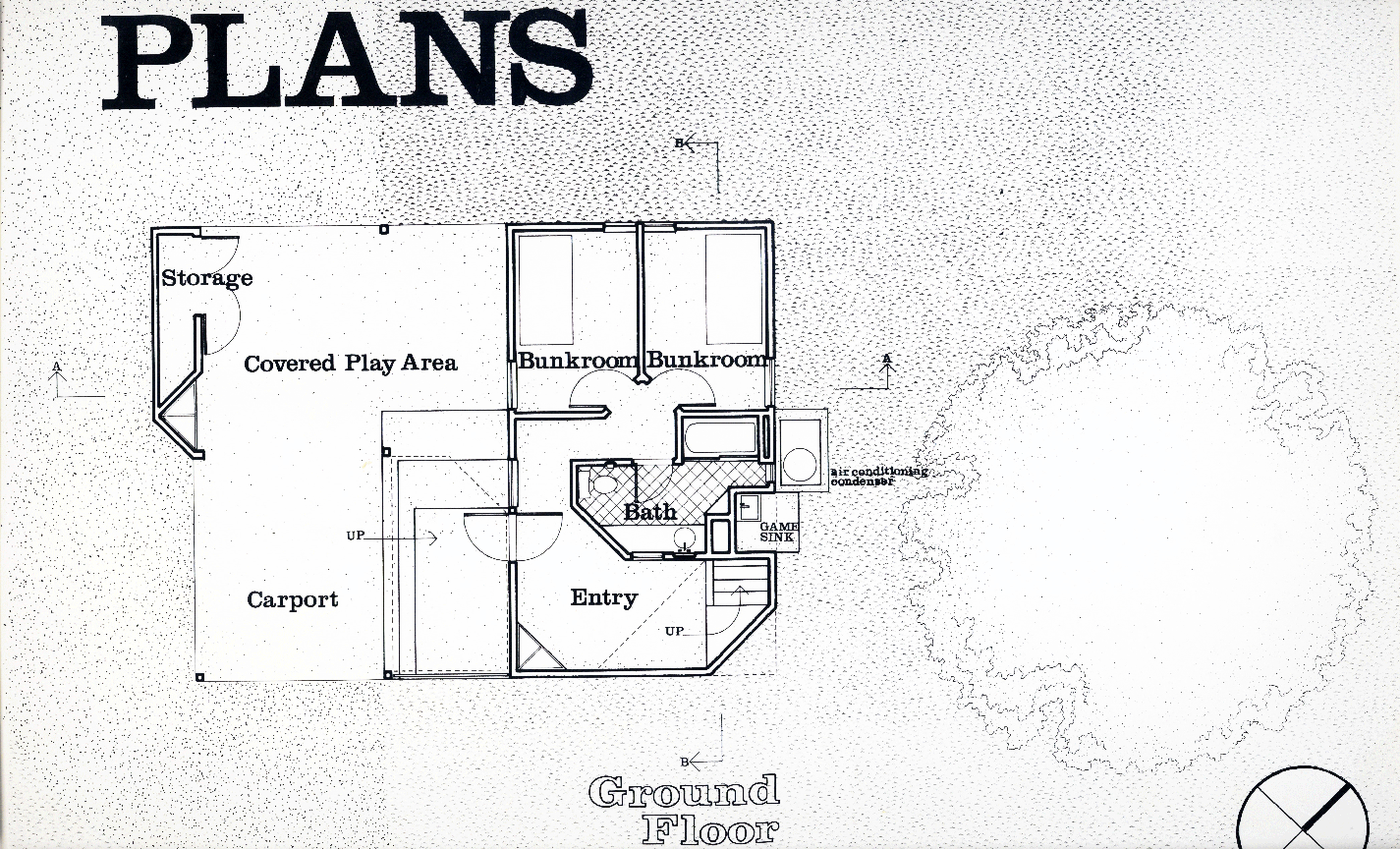
Program drove the arrangement, with a 'twist' of Complexity.
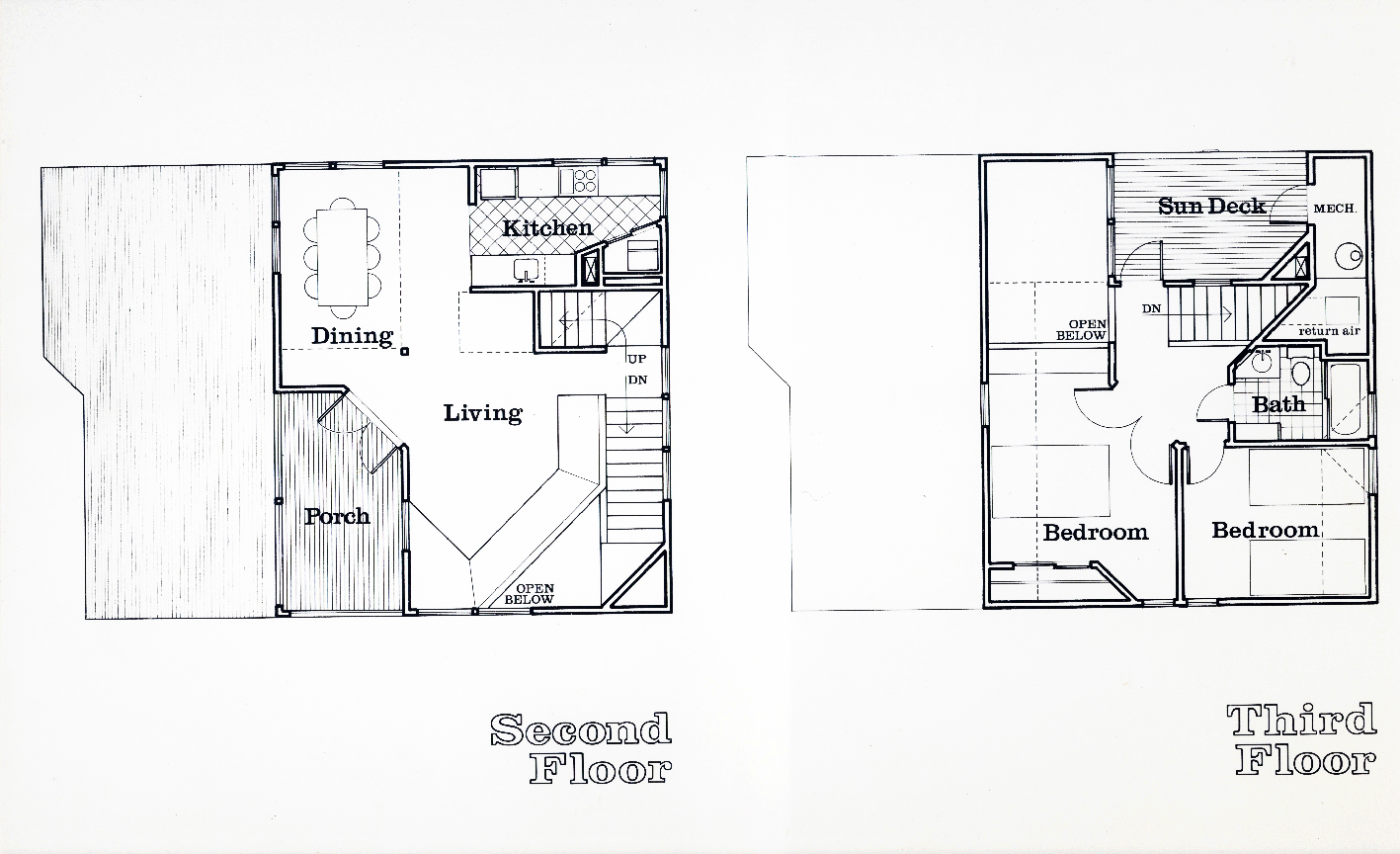
'Piano Nobile' was diagramaticly "central" between Kids and Adults levels. The informal Living area featured a built-in bench, and an open void to below, generated by the staircase, as well as a double-height Dining area. The Master Bedroom also relates to this void..

L/SE - the Approach facade, more 'symmetrical' and centered. R/NE - more 'functional' and informal: game sink below, staircase "hopping windows", a dormer for Adults.
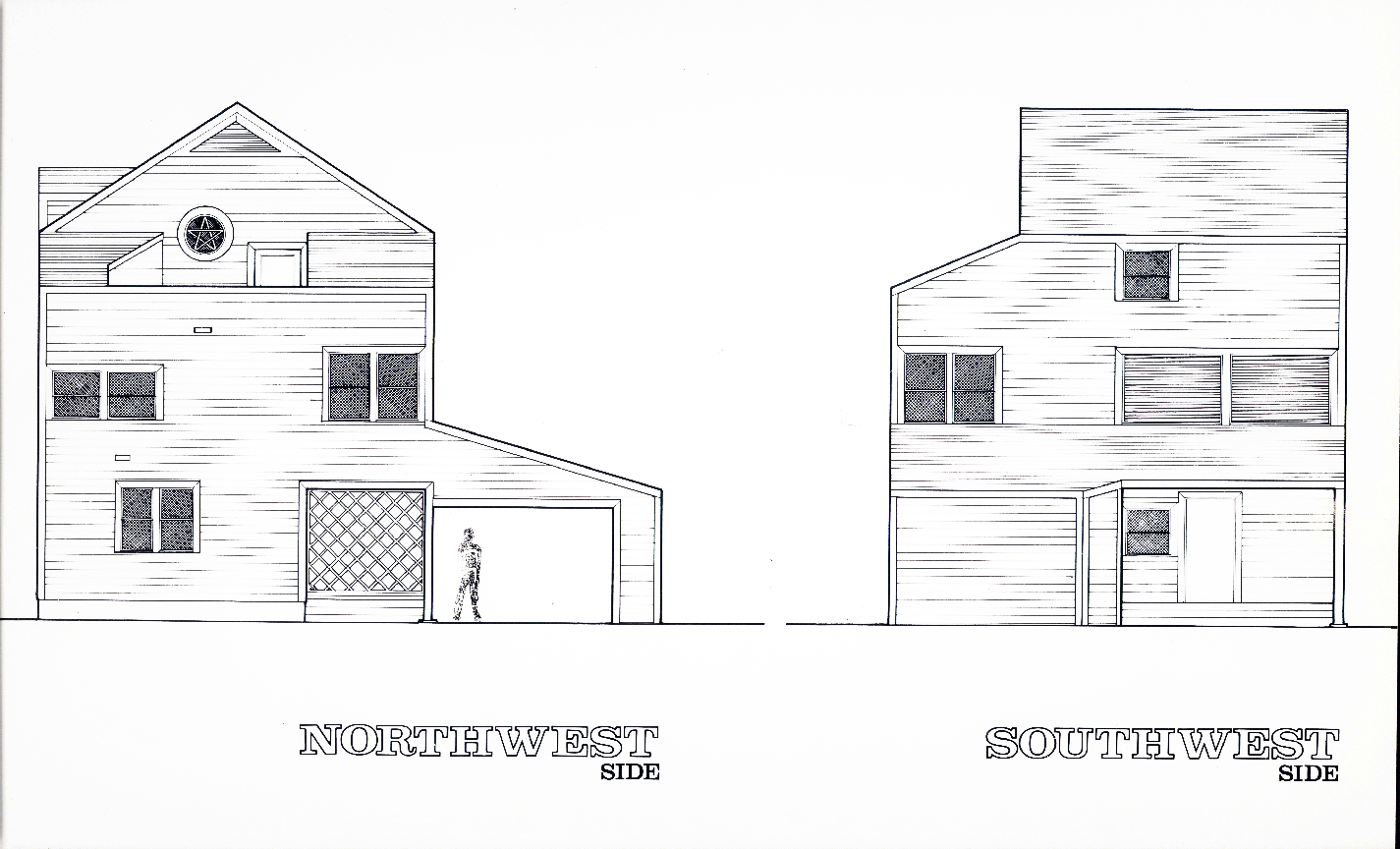
L/NW - view facade into the wooded area, with exterior deck and Lone Star window. R/SW - Exterior screen porch above car port, combination of 'gable' and 'shed' forms.
'CLICK' on images for Caption and to review in Sequence.





